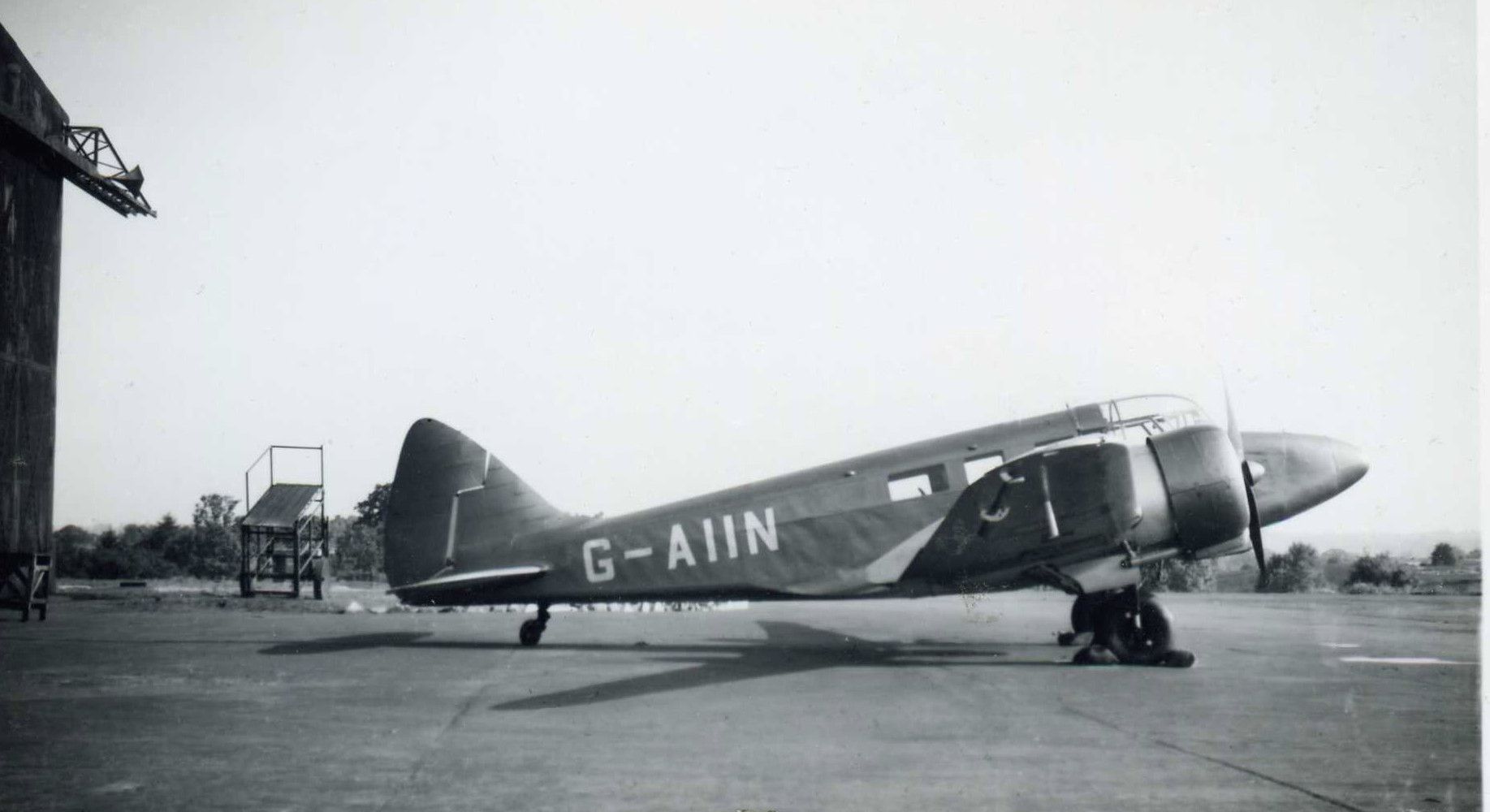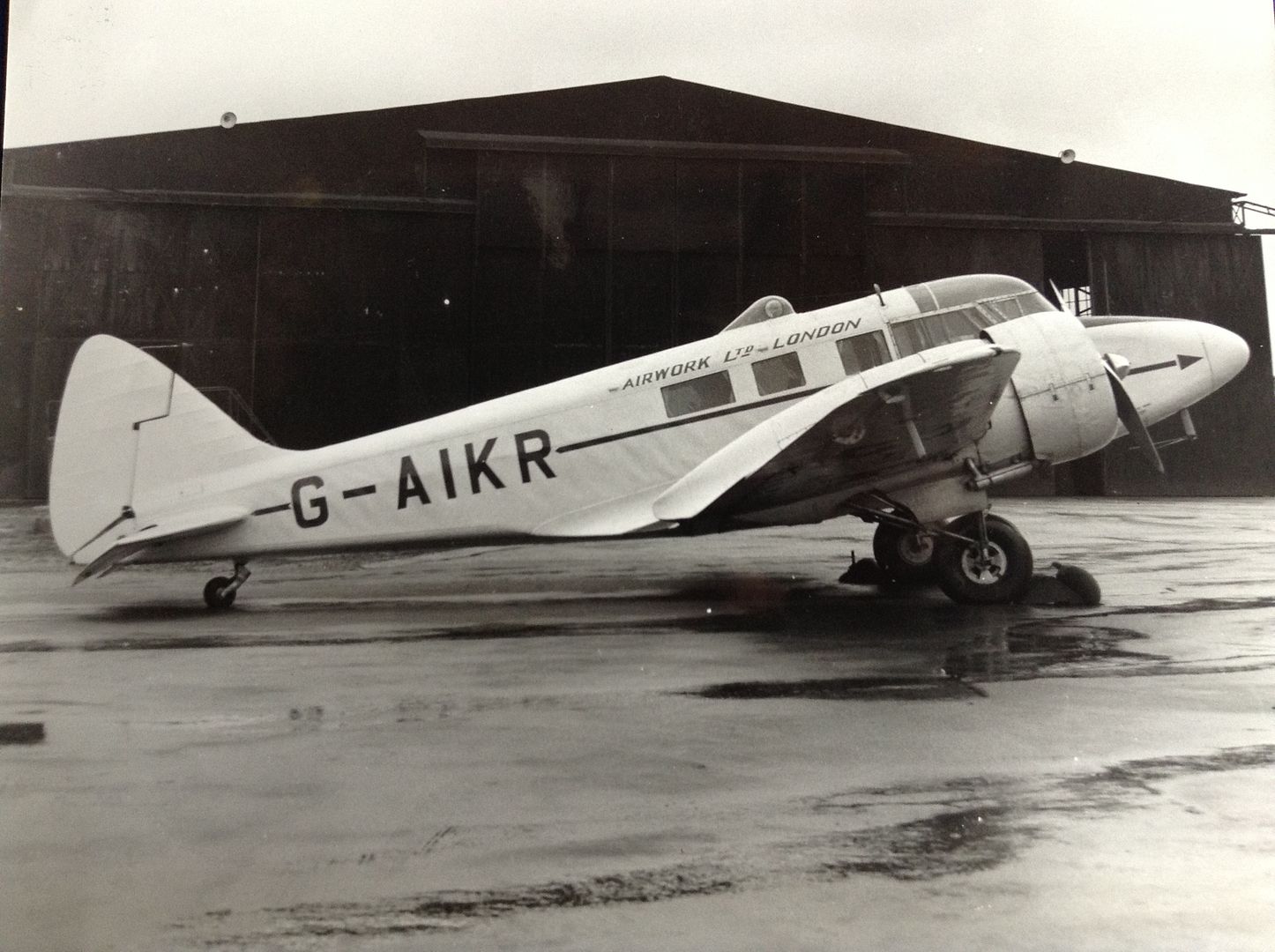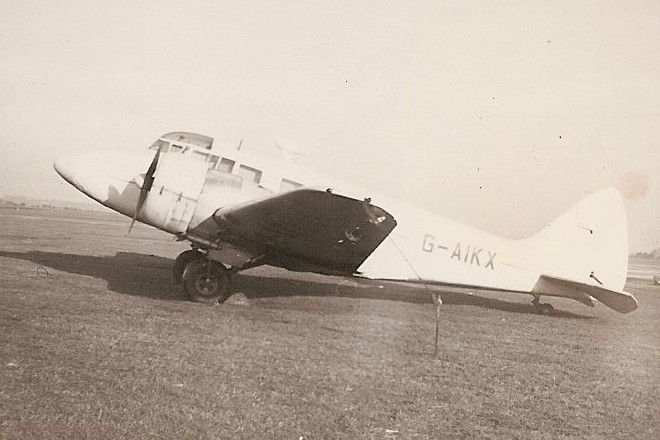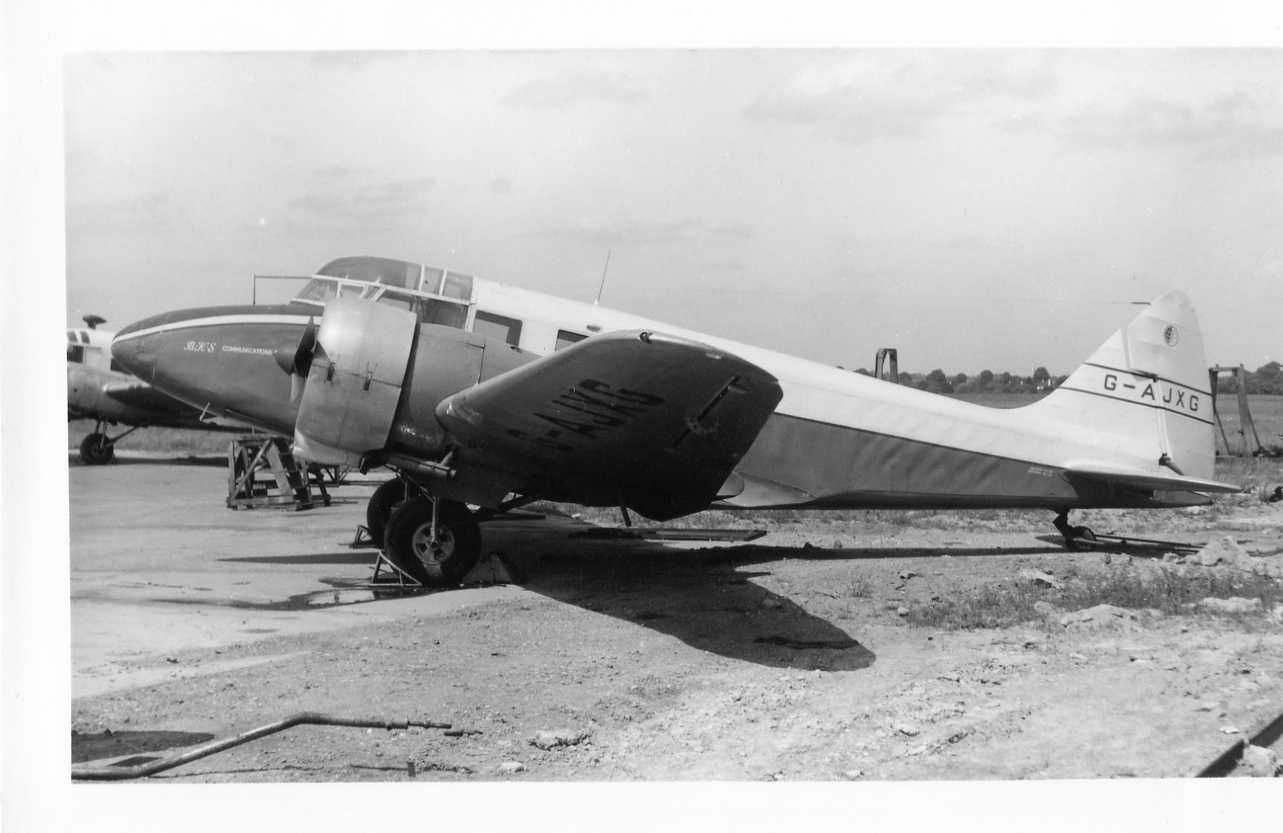Post by flyboy on Feb 22, 2019 16:32:46 GMT
The Airspeed Oxford:
Part one;
Development in response to Specification T.23/36 issued by the British Air Ministry for a capable twin engined trainer led to the Airspeed AS.10 Oxford. Used extensively in the training role for aircrew in navigation, radio operation, bombing and gunnery
it was put into urgent production as a build up to World War II was recognised.
The company had previously produced the AS.6 Envoy on which the the design for the Oxford was based. The prototype made it's first flight on 19th June 1937 and orders soon followed for many thousands of the type from Air Forces around the world including Great Britain, Australia, France, Canada,New Zealand, Poland and even the United States.
Production even continued post war when newly forming Air Forces of such countries as Israel, Egypt and India needed what was considered to be a very capable training and general - purpose aircraft. In total 8,751 Oxford's were manufactured with the RAF being the primary user.
Development:
The AS.6 Envoy had been designed by Hassell Tiltman during the 1930's. Seven aircraft, known as the 'Convertible Envoy' had already been sold to the South African Air Force having been modified with a hand - operated Armstrong Whitworth dorsal turret equipped with a machine gun for gunnery practice and also optional bomb racks for bombing practice. This proved particularly valuable when designing the Oxford which was to follow a similar role in RAF service. An order for 136 aircraft was soon to follow in 1937 which allowed for the implementation of a more economical flow-line for production at Airspeed's Portsmouth factory. Two marks were initially envisaged: the Mk.1 a general purpose trainer fitted with the dorsal turret and the Mk.2 without a turret but fitted with dual controls.
As further large contracts soon followed it was decided that to improve production capacity de Havilland Aircraft would also produce the aircraft at their Hatfield factory and other companies would be used as demand increased.
By the end of production Airspeed alone had produced 4,400+ aircraft at Portsmouth, a further 550 at their other factory at Christchurch while another 1,515 were completed at Hatfield . An additional 1,369 by Percival Aircraft at Luton and another 750 by Coventry based Standard Motors. By the end of production 8,751 Oxford's had been assembled.
Design:
The Oxford was a low-wing twin engined cantilever monoplane with a tail-wheel undercarriage. It was specifically designed to cater for numerous training tasks including navigation, pilot training, night flying, direction finding and vertical photography and was fully fitted out with a full array of instruments and controls in the cockpit. In addition to it's training role secondary roles such as air ambulance and maritime patrol could be undertaken.
Normally operated by a three man crew the interior layout of seating could be changed to accommodate which ever training task was being undertaken on a particular flight.
The aircraft was equipped with a retractable undercarriage and was also fitted with a manual option in case of engine power failure.
Following the ending of the war 152 of the surplus Oxfords would be converted to 6-seat commercial airliners known as the AS.65 Consul.
Variants:
AS.10 Oxford 1 The first Mark.1 flew in June 1937 and entered service with the Central Flying School in November of that year.There were about 300 of the aircraft in service at the start of WWII. The Royal New Zealand Air Force were also using the type to train crews for RAF service.
AS.10 Oxford 11 The second planned version, it didn't have a turret but was equipped with dual controls and was an advanced pilot trainer.
AS.10 Oxford 111 With improved engines and using Rotol constant-speed propellers this mark was used for navigation and radio training.
AS.10 Oxford 1V Flying test-bed for the de Havilland Gipsy IV engine.
AS Oxford T.11 Of the nine that were built eight were conversions of earlier Mark 1's.
AS.40 Oxford Civil conversion for radio research, only two completed.
AS.41 Oxford One aircraft converted for use by Miles Aircraft as a test-bed for the Alvis Leonides engine.
AS.42 Oxford Oxford 1 modified to meet Specification T.39/37 for New Zealand.
AS.43 Oxford Survey variant of the AS.42
AS.46 Oxford V The final variant with Pratt and Whitney R-985 radial engines and variable pitch propellers giving improved performance. Many earlier models were upgraded to this standard.
AS.65 Consul Of the numerous ex-RAF Oxfords available following WWII 162 were selected for civilian transport conversion to be known as the Airspeed Consul.
The Airspeed AS.65 Consul:
From 1946 surplus inexpensive RAF Oxfords were refurbished at the Air Speed factory at Portsmouth for the civilian market to be known as the AS.65 Consul. The Consul proved popular as a small airliner for use by scheduled and charter carriers throughout the world. Seeing the potential Airspeed developed and offered for sale a conversion kit. It was also of interest to larger industrial companies who used it as a company transport for their executives.
Difficulty with their operation due to their limiting 6 seat capacity, often heavy wartime use, wooden construction and tricky handling meant that their popularity in the civilian sector was not as long lived as expected and many of the Consuls were purchased by emerging air forces such as Egypt and taken on charge by existing air force operators for use as VIP transports including the British, Canadian and New Zealand Air Forces.
A random selection of civil operators included:
Air Lingus x2, Malayan Airways x3, Union of Burma Airways x4, Air Jordan x7 and British Aviation Services x4 at Blackbushe.
A random selection of military operators included:
Israeli Defence Force x11, Argentine Air Force x10, Belgian Force Publique x6 and the Royal New Zealand Air Force that had six aircraft converted by de Havilland Aircraft New Zealand in the early 1960's.
General Characteristics Oxford and Consul:
Crew One
Capacity 6 passengers
Length 35ft 4in (10.77m)
Wingspan 53ft 4in (16.26m)
Height 11ft 1in (3.38m)
Weight Empty 6,047lb (2,749kg)
Weight Take Off Max. 8,250lb (3,750kg)
Powerplant 2x Armstrong Siddeley Cheeter10 radial engines
395hp (182kW) each.
Performance:
Speed Max. 190mph (306 km/h)
Speed Cruise 156mph (251 km/h)
Range 900mi (1,449km)
Service Ceiling 19,000ft (5,800m)
Rate of Climb 1,180ft/min (6.0 m/s)
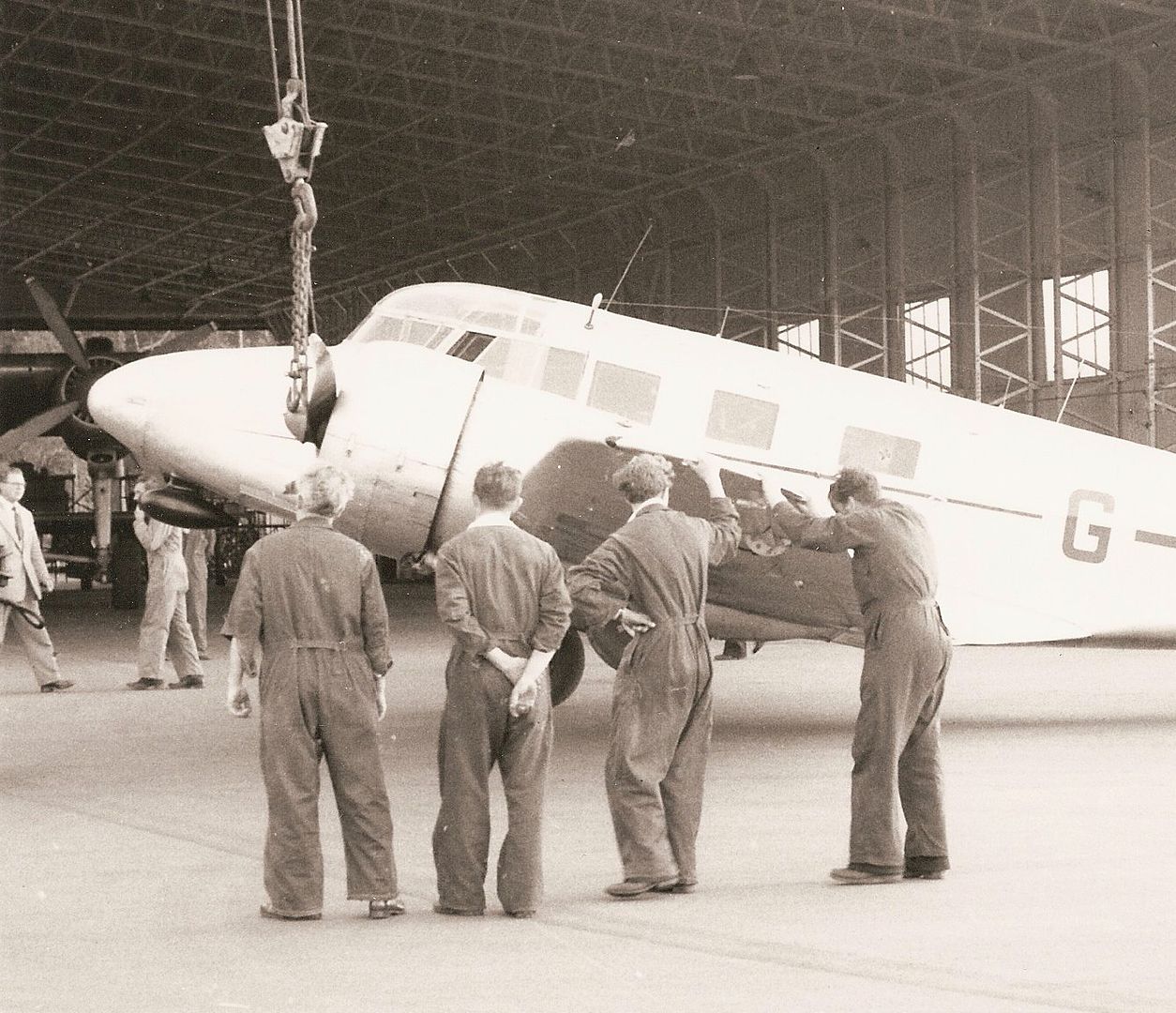
Oops !
To part two
Part one;
Development in response to Specification T.23/36 issued by the British Air Ministry for a capable twin engined trainer led to the Airspeed AS.10 Oxford. Used extensively in the training role for aircrew in navigation, radio operation, bombing and gunnery
it was put into urgent production as a build up to World War II was recognised.
The company had previously produced the AS.6 Envoy on which the the design for the Oxford was based. The prototype made it's first flight on 19th June 1937 and orders soon followed for many thousands of the type from Air Forces around the world including Great Britain, Australia, France, Canada,New Zealand, Poland and even the United States.
Production even continued post war when newly forming Air Forces of such countries as Israel, Egypt and India needed what was considered to be a very capable training and general - purpose aircraft. In total 8,751 Oxford's were manufactured with the RAF being the primary user.
Development:
The AS.6 Envoy had been designed by Hassell Tiltman during the 1930's. Seven aircraft, known as the 'Convertible Envoy' had already been sold to the South African Air Force having been modified with a hand - operated Armstrong Whitworth dorsal turret equipped with a machine gun for gunnery practice and also optional bomb racks for bombing practice. This proved particularly valuable when designing the Oxford which was to follow a similar role in RAF service. An order for 136 aircraft was soon to follow in 1937 which allowed for the implementation of a more economical flow-line for production at Airspeed's Portsmouth factory. Two marks were initially envisaged: the Mk.1 a general purpose trainer fitted with the dorsal turret and the Mk.2 without a turret but fitted with dual controls.
As further large contracts soon followed it was decided that to improve production capacity de Havilland Aircraft would also produce the aircraft at their Hatfield factory and other companies would be used as demand increased.
By the end of production Airspeed alone had produced 4,400+ aircraft at Portsmouth, a further 550 at their other factory at Christchurch while another 1,515 were completed at Hatfield . An additional 1,369 by Percival Aircraft at Luton and another 750 by Coventry based Standard Motors. By the end of production 8,751 Oxford's had been assembled.
Design:
The Oxford was a low-wing twin engined cantilever monoplane with a tail-wheel undercarriage. It was specifically designed to cater for numerous training tasks including navigation, pilot training, night flying, direction finding and vertical photography and was fully fitted out with a full array of instruments and controls in the cockpit. In addition to it's training role secondary roles such as air ambulance and maritime patrol could be undertaken.
Normally operated by a three man crew the interior layout of seating could be changed to accommodate which ever training task was being undertaken on a particular flight.
The aircraft was equipped with a retractable undercarriage and was also fitted with a manual option in case of engine power failure.
Following the ending of the war 152 of the surplus Oxfords would be converted to 6-seat commercial airliners known as the AS.65 Consul.
Variants:
AS.10 Oxford 1 The first Mark.1 flew in June 1937 and entered service with the Central Flying School in November of that year.There were about 300 of the aircraft in service at the start of WWII. The Royal New Zealand Air Force were also using the type to train crews for RAF service.
AS.10 Oxford 11 The second planned version, it didn't have a turret but was equipped with dual controls and was an advanced pilot trainer.
AS.10 Oxford 111 With improved engines and using Rotol constant-speed propellers this mark was used for navigation and radio training.
AS.10 Oxford 1V Flying test-bed for the de Havilland Gipsy IV engine.
AS Oxford T.11 Of the nine that were built eight were conversions of earlier Mark 1's.
AS.40 Oxford Civil conversion for radio research, only two completed.
AS.41 Oxford One aircraft converted for use by Miles Aircraft as a test-bed for the Alvis Leonides engine.
AS.42 Oxford Oxford 1 modified to meet Specification T.39/37 for New Zealand.
AS.43 Oxford Survey variant of the AS.42
AS.46 Oxford V The final variant with Pratt and Whitney R-985 radial engines and variable pitch propellers giving improved performance. Many earlier models were upgraded to this standard.
AS.65 Consul Of the numerous ex-RAF Oxfords available following WWII 162 were selected for civilian transport conversion to be known as the Airspeed Consul.
The Airspeed AS.65 Consul:
From 1946 surplus inexpensive RAF Oxfords were refurbished at the Air Speed factory at Portsmouth for the civilian market to be known as the AS.65 Consul. The Consul proved popular as a small airliner for use by scheduled and charter carriers throughout the world. Seeing the potential Airspeed developed and offered for sale a conversion kit. It was also of interest to larger industrial companies who used it as a company transport for their executives.
Difficulty with their operation due to their limiting 6 seat capacity, often heavy wartime use, wooden construction and tricky handling meant that their popularity in the civilian sector was not as long lived as expected and many of the Consuls were purchased by emerging air forces such as Egypt and taken on charge by existing air force operators for use as VIP transports including the British, Canadian and New Zealand Air Forces.
A random selection of civil operators included:
Air Lingus x2, Malayan Airways x3, Union of Burma Airways x4, Air Jordan x7 and British Aviation Services x4 at Blackbushe.
A random selection of military operators included:
Israeli Defence Force x11, Argentine Air Force x10, Belgian Force Publique x6 and the Royal New Zealand Air Force that had six aircraft converted by de Havilland Aircraft New Zealand in the early 1960's.
General Characteristics Oxford and Consul:
Crew One
Capacity 6 passengers
Length 35ft 4in (10.77m)
Wingspan 53ft 4in (16.26m)
Height 11ft 1in (3.38m)
Weight Empty 6,047lb (2,749kg)
Weight Take Off Max. 8,250lb (3,750kg)
Powerplant 2x Armstrong Siddeley Cheeter10 radial engines
395hp (182kW) each.
Performance:
Speed Max. 190mph (306 km/h)
Speed Cruise 156mph (251 km/h)
Range 900mi (1,449km)
Service Ceiling 19,000ft (5,800m)
Rate of Climb 1,180ft/min (6.0 m/s)

Oops !
To part two

